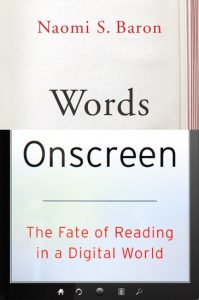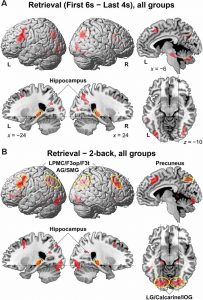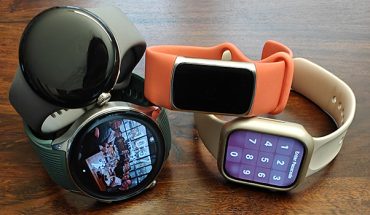Note-takers take note: new research indicates that writing by hand is a more effective trigger for memory and retention.

Writing by hand is a more effective trigger for memory and retention than using digital devices, researchers say. Image “paper vs digital” by mukais is licensed under CC BY 2.0.
Paper is the more advanced technology for that application. Better than digital.
By assessing students who took notes by hand as opposed to those who used digital methods, researchers determined those using the paper-based process were 25 per cent faster than those who used digital gadgetry.
In separate research, people were offered a choice of media to use while studying or concentrating on written material. Hard-copy print-outs, smartphones, laptops, e-readers and desktop computers were used, yet some 92 per cent said hard copy allowed them to concentrate the best.
Linguistics professor Naomi Baron conducted a survey of reading preferences among over 300 university students in the U.S., Japan, Slovakia and Germany as she worked on one of her books, Words Onscreen: The Fate of Reading in a Digital World.
On-screen reading can have many positive aspects, she writes, including possible cost-savings and convenience, as well as the opportunity to improve access to books and other written materials for people around the world.
But the positives come with negatives. Digital devices do so much more than just present reading material on screen it is easy to be distracted; the very nature of screen size and scrolling capabilities encourage readers to skim rather than dwell on text.

Linguistics professor Naomi Baron conducted a survey of reading preferences among over 300 university students in the U.S., Japan, Slovakia and Germany as she worked on one of her books, Words Onscreen: The Fate of Reading in a Digital World.
And there’s always those pop-up notifications about incoming calls or messages.
Baron (she’s also the author of Always On: Language in an Online and Mobile World) also points out that if the way we read can change, so, too, the way we write. Shorter articles are now encouraged by many publishers (if not readers and even authors), perhaps even hers.
In fact, researchers at the University of Minnesota say the number of individual characters per line of digital text on a small digital device can have a negative impact on reading speed. In their paper published in Proceedings of the National Academy of Sciences, Nilsu Atilgan, Ying-Zi Xiong, and Gordon Legge describe experiments they conducted with volunteers reading passages on different types of devices and what they found. They added that as smartphone screen sizes have grown, the issues of smaller text or fewer characters displayed per line has lessened. So smart watches may not be smarter, just smaller.
It seems that no matter the size of the line or the length of the writing, using physical paper is better, and can lead to more brain activity, than using a digital device.
In a study involving Japanese university students and recent graduates, it was shown that writing on physical paper can lead to more brain activity and better memory and recollection about the information just an hour after reading it. Researchers say that the complex, spatial and tactile information associated with writing by hand on physical paper is likely what leads to improved memory.
“Actually, paper is more advanced and useful compared to electronic documents because paper contains more one-of-a-kind information for stronger memory recall,” said Professor Kuniyoshi L. Sakai, a neuroscientist at the University of Tokyo and corresponding author of the research recently published in Frontiers in Behavioral Neuroscience. The research was completed with collaborators from the NTT Data Institute of Management Consulting.

If you can read and comprehend this, it may not matter which medium you use. But researchers say that the activation of the hippocampus indicates that analog methods contain richer spatial details that can be recalled and navigated in the mind’s eye.
Localized activations were observed bilaterally in the lateral premotor cortex/opercular/triangular parts of the inferior frontal gyrus (LPMC/F3op/F3t), angular/supramarginal gyri (AG/SMG), hippocampus, precuneus, and lingual gyrus/calcarine/inferior occipital gyrus (LG/calcarine/IOG)
Image from Paper Notebooks vs. Mobile Devices: Brain Activation Differences During Memory Retrieval. Keita Umejima1, Takuya Ibaraki, Takahiro Yamazaki and Kuniyoshi L. Sakai1 DOI: 10.3389/fnbeh.2021.634158
Using functional magnetic resonance imaging (fMRI), Sakai and his research team found that the human brain is very accustomed to learning in specific ways; the unique aspects of media we use to learn can help or trigger the brain in that way.
For example, we often remember information in a way that reflects the media by which we learned it: a very telling fact that appears at the top of the left hand page might be recalled just by its physical position on the page. Or, adding our own handwritten notes in the margins of a book, highlighting certain important text passages, using colour-coded underlines, even adding sticky notes can bring a kind of spatial enrichment that could enhance memory.
But digital media are more uniform, as Sakai and his team wrote:
“Our present experiments demonstrated that brain activations related to memory, visual imagery, and language during the retrieval of specific information, as well as the deeper encoding of that information, were stronger in participants using a paper notebook than in those using electronic devices. Our results suggest that the use of a paper notebook affects these higher-order brain functions, and this could have important implications for education, particularly in terms of the pros and cons of e-learning. The expanded use of mobile devices or computers could undercut the use of traditional textbooks and paper notebooks, which may in fact provide richer information from the perspective of memory encoding.”
So there is much still to learn and consider regarding the use of paper or a digital device. Current research has not looked to identify any possible brain activation changes as a result of long-term exposure to mobile devices. On the other hand, device screen sizes are growing, font and typographic choices are increasing, as are software packages for handwriting recognition.
But, even though research has focused on text-based learning and memorization, researchers encourage using paper for creative pursuits as well.
“It is reasonable that one’s creativity will likely become more fruitful if prior knowledge is stored with stronger learning and more precisely retrieved from memory. For art, composing music, or other creative works, I would emphasize the use of paper instead of digital methods,” said Sakai.
# # #




